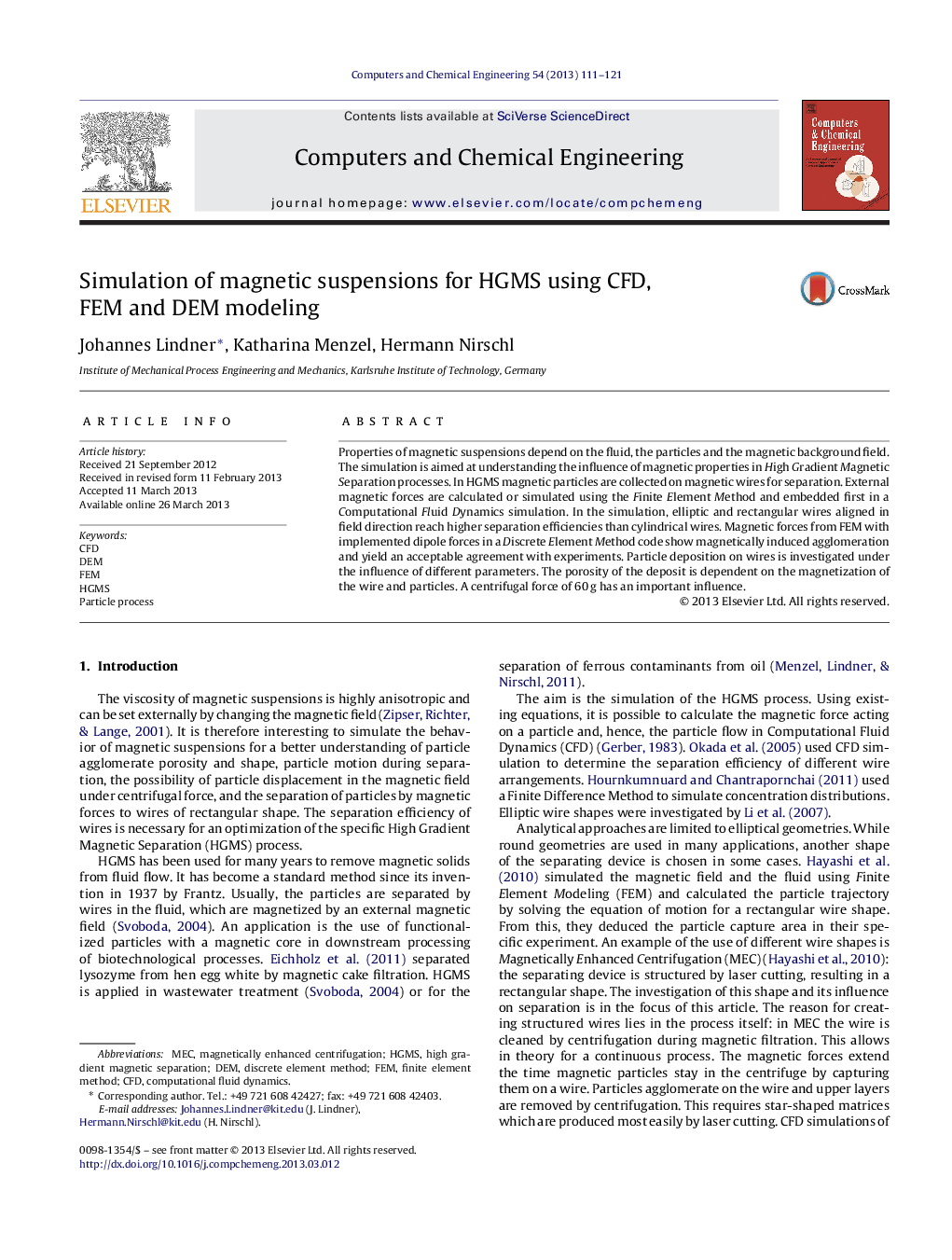| Article ID | Journal | Published Year | Pages | File Type |
|---|---|---|---|---|
| 172650 | Computers & Chemical Engineering | 2013 | 11 Pages |
•Finite Element Modeling simulation read in Computational Fluid Dynamics for magnetic particle tracks.•Discrete Element Modeling of magnetic particle chains.•Simulation of magnetic fluids.
Properties of magnetic suspensions depend on the fluid, the particles and the magnetic background field. The simulation is aimed at understanding the influence of magnetic properties in High Gradient Magnetic Separation processes. In HGMS magnetic particles are collected on magnetic wires for separation. External magnetic forces are calculated or simulated using the Finite Element Method and embedded first in a Computational Fluid Dynamics simulation. In the simulation, elliptic and rectangular wires aligned in field direction reach higher separation efficiencies than cylindrical wires. Magnetic forces from FEM with implemented dipole forces in a Discrete Element Method code show magnetically induced agglomeration and yield an acceptable agreement with experiments. Particle deposition on wires is investigated under the influence of different parameters. The porosity of the deposit is dependent on the magnetization of the wire and particles. A centrifugal force of 60 g has an important influence.
